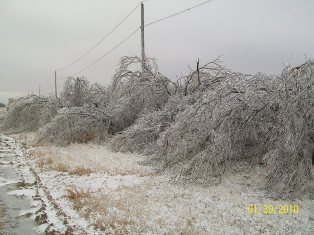NSSL will collect dual-polarization radar data along with public weather observations during 2010-2011 winter weather events in the Winter Precipitation Identification Near the Ground (W-PING) project. The volunteer surface observations are merged with what the radar has detected above the ground to refine precipitation estimation algorithms.
Dual-polarization radar technology allows discrimination between rain and different types of mixed-phase or frozen particles. Since radars cannot “see” at ground level, NSSL scientists are developing algorithms that will produce estimates of whether the precipitation is falling in liquid or frozen form, or if the precipitation is reaching the ground.
Central Oklahoma W-PING volunteers, including families and classrooms, have registered more than 3300 reports of snow, ice pellets, drizzle and rain since the beginning of the project in November 2006. NSSL has found the public observations to be of remarkably high quality with 80% of the reports coincident with radar data. Volunteers access the project anonymously on the Internet at http://www.nssl.noaa.gov/winter/ or through a link on the Norman, Oklahoma National Weather Service Web page. A W-PING project will be launched in the area covered by the NEXRAD radar serving the Wichita, KS area as soon as the radar is upgraded with dual-polarization technology in early 2011. W-PING will expand through out the U.S. as the rest of the NEXRAD radars are upgraded.


